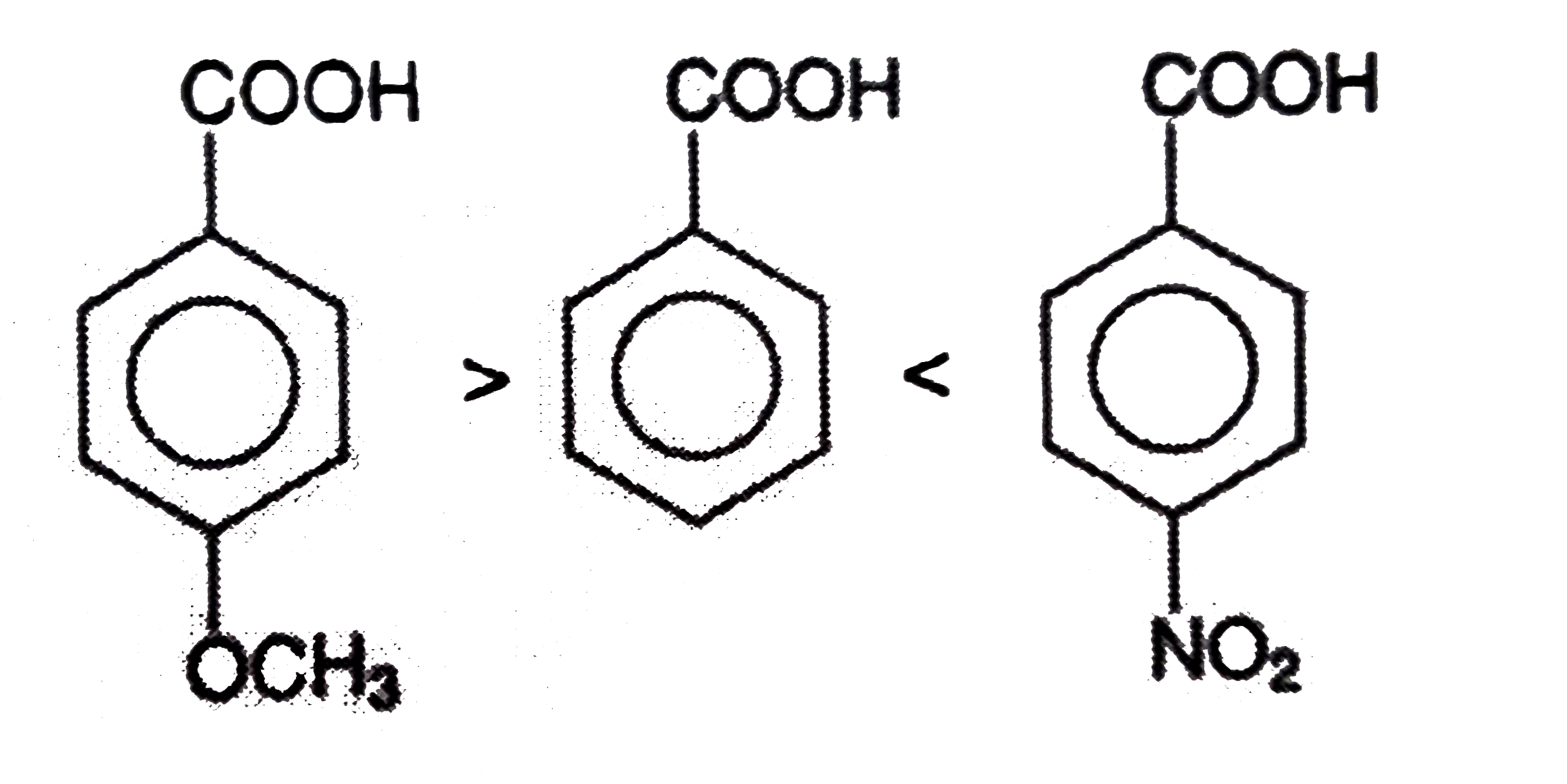Arrange the following derivative of carboxylic acid in their increasing of their acidity.




The correct Answer is:a
To arrange the derivatives of carboxylic acids in increasing order of acidity, we need to analyze the effects of substituents on the acidity of the carboxylic acid group. Here’s a step-by-step solution:
Step 1: Identify the Compounds
Let's denote the three derivatives of carboxylic acids as:
1. Compound A: Contains OCH3 (methoxy group)
2. Compound B: Contains no substituents
3. Compound C: Contains NO2 (nitro group)
Step 2: Understand the Effect of Substituents
- Electron-Withdrawing Groups (EWG): These groups, such as NO2, increase the acidity of carboxylic acids because they stabilize the negative charge on the carboxylate ion formed after deprotonation.
- Electron-Donating Groups (EDG): These groups, such as OCH3, decrease the acidity because they destabilize the negative charge on the carboxylate ion.
Step 3: Analyze Each Compound
- Compound A (OCH3): The methoxy group is an electron-donating group, which decreases acidity.
- Compound B (No substituents): This compound has no additional effects on acidity, so it has a moderate level of acidity.
- Compound C (NO2): The nitro group is an electron-withdrawing group, which significantly increases acidity.
Step 4: Arrange in Increasing Order of Acidity
Based on the analysis:
- Least acidic: Compound A (OCH3) - due to the electron-donating effect.
- Moderately acidic: Compound B (No substituents) - baseline acidity.
- Most acidic: Compound C (NO2) - due to the electron-withdrawing effect.
Final Order
The increasing order of acidity is:
1. Compound A (OCH3)
2. Compound B (No substituents)
3. Compound C (NO2)
Thus, the correct answer is:
A < B < C
Let's denote the three derivatives of carboxylic acids as:
1. Compound A: Contains OCH3 (methoxy group)
2. Compound B: Contains no substituents
3. Compound C: Contains NO2 (nitro group)
- Electron-Withdrawing Groups (EWG): These groups, such as NO2, increase the acidity of carboxylic acids because they stabilize the negative charge on the carboxylate ion formed after deprotonation.
- Electron-Donating Groups (EDG): These groups, such as OCH3, decrease the acidity because they destabilize the negative charge on the carboxylate ion.
- Compound A (OCH3): The methoxy group is an electron-donating group, which decreases acidity.
- Compound B (No substituents): This compound has no additional effects on acidity, so it has a moderate level of acidity.
- Compound C (NO2): The nitro group is an electron-withdrawing group, which significantly increases acidity.
Based on the analysis:
- Least acidic: Compound A (OCH3) - due to the electron-donating effect.
- Moderately acidic: Compound B (No substituents) - baseline acidity.
- Most acidic: Compound C (NO2) - due to the electron-withdrawing effect.
The increasing order of acidity is:
1. Compound A (OCH3)
2. Compound B (No substituents)
3. Compound C (NO2)
A < B < C
Topper's Solved these Questions
Similar Questions
Knowledge Check

Carboxylic acid (A) is:A B
B C
C DBoth (a) and (c )
DBoth (a) and (c )Which of the following is not derivative of carboxylic acids ?
AanhydridesBestersCaminesDamidesArrange the following carboxylic acid in their decreasing acidity
(1) COOH|COOH Oxalic acid
(2) HOOC−CH2−COOH Molonic acid
(3) CH2−COOH|CH2−COOH Succinic acidA3>2>1B1>2>3C2>3>1D2>1>3
Arrange the following in order of increasing acidity:

View SolutionArrange the following acids in the correct increasing order of their acidic strength,
HCl, HBr, HI, HF
View SolutionArrange the following acid in order of increasing acidity

View SolutionArrange the following acids in order of their increasing acidity

View SolutionWhich of the following structure of carboxylic acid accounts for the acidic nature
View Solution
